PAUL SIMONS TOP 25
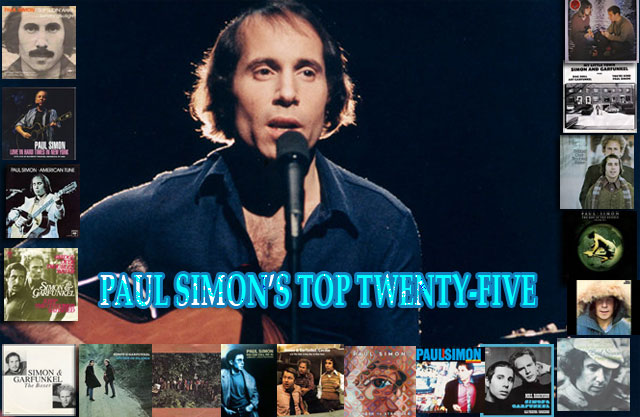
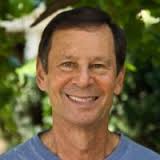 On July 3, 1932, Yankee first baseman Lou Gehrig appeared to have finally stepped out from beyond Babe Ruth’s shadows. Ruth, for good and understandable reasons, had always been the man in the headlines. But that day, the undersung Gehrig did something that hadn’t been done since the 1890’s—even by the great Ruth. He hit four consecutive home runs, an amazing achievement. And yet, even on that momentous occasion (something few ballplayers—and no Yankee—had ever done before or since), Gehrig’s achievement once again took second place in the baseball headlines. On that very day, John J. McGraw, the venerable manager of the New York Giants for most of the century, announced his retirement.
On July 3, 1932, Yankee first baseman Lou Gehrig appeared to have finally stepped out from beyond Babe Ruth’s shadows. Ruth, for good and understandable reasons, had always been the man in the headlines. But that day, the undersung Gehrig did something that hadn’t been done since the 1890’s—even by the great Ruth. He hit four consecutive home runs, an amazing achievement. And yet, even on that momentous occasion (something few ballplayers—and no Yankee—had ever done before or since), Gehrig’s achievement once again took second place in the baseball headlines. On that very day, John J. McGraw, the venerable manager of the New York Giants for most of the century, announced his retirement.
I thought about that this past October 13th, the day Paul Simon, one of the greatest musical artists of the 20th century turned 75. This was surely an event of great moment. Remarkably, however, it was the same day on which Bob Dylan dominated the headlines by being awarded the Nobel Prize for Literature. Today, Lou Gehrig is known best for having died of the dread disease that bears his name. But however great Gehrig’s achievements were both that day and throughout his foreshortened career, few would gainsay that Babe Ruth remains the greatest man to have ever played baseball. The Babe, after all, was The Babe.
Similarly, in just about any other generation, Paul Simon would have been considered the country’s premiere singer-songwriter. Remember, he and Dylan largely pioneered the craft. But it was Simon’s misfortune (and the world’s great good luck) for him to have come of age at the same time as Dylan. Bing Crosby once said of Frank Sinatra, “A voice like that comes along just once in a lifetime; too bad it was during mine.” That said, to quote a line from one of Paul Simon’s songs, he, along with Dylan, was “Born at the Right Time.” Thank God, providence, or happenstance (your pick), the two of them have (more or less) peacefully coexisted for the last half-century. And so, not in defiance of Dylan’s well-deserved (and finally accepted) Nobel Prize, I choose to salute Paul Simon and his own estimable body of work.
Without wanting to overstress the comparisons between Dylan and Simon—after all, this is really not a competition—there are a few things worth mentioning. Paul Simon was a Rock & Roll singer with a hit single (“Hey School Girl” in 1956) before Dylan had ever dreamed of a recording contract. (I don’t know, maybe he had dreamed of it; didn’t we all?) Simon, of course, is a much better guitarist than Dylan, and has certainly been more eclectic in terms of the kinds of music he has embraced. While both he and Dylan can write in a variety of genres (folk, pop, rock and roll, country and blues), Simon has dug deeper into forms of “world” music (e.g. African, Brazilian, etc) than Dylan has ever done or, possibly, cared to.
While both have dabbled in film, Paul Simon’s “One Trick Pony” (while hardly a box-office hit), had a studio release, whereas Dylan’s efforts (e.g. “Renaldo and Clara,”) were more “Indie” in nature.* Simon even wrote a Broadway musical called “The Capeman,” which—though neither a commercial nor critical success (it closed after 68 performance, experiencing a then record loss of $11 million)—was remarkably ambitious both in scope and attitude.**
As for singing ability, while many like Dylan’s idiosyncratic voice, it is—to be sure—an acquired taste. Simon, both on lead vocals and in harmony, has a much better voice. There is also, in my view, no comparison as to which is the better live performer. Both with Art Garfunkel and when performing alone, Simon is routinely better than Dylan, whose live performances are, to be kind, uneven. But to give Dylan his due, many of his songs are so well-suited to his voice, that any attempt to “cover” them would seem futile (Think of, for example, “Like a Rolling Stone,” “Desolation Row,” or “Ballad of a Thin Man.”) As a songwriter, Dylan’s brilliance appears to spill off the page in what seems to be a stream of consciousness, while Simon’s work, though often brilliant as well, feels more studied and intellectual. But here’s the good news—we don’t have to choose between them; it is possible to value and enjoy both men’s contribution to the music revolution that began in the 60’s and wouldn’t have been the same without them. In fairness, I should make clear that, overall, Dylan’s contribution has been the more significant. The music that came out of—and followed the 60’s—owes more to Bob Dylan than any other single figure in what we now think of a folk-rock and its musical progeny. That, however, shouldn’t detract from the masterful body of work compiled by Paul Simon, which is, after all, the much-deserved subject of this retrospective. Simon was, among other kudos, the winner of the first Gershwin Prize for songwriting (March, 2007. An excellent DVD is available of this well-deserved tribute.), and could hardly be considered under-recognized.
Before leaving the Dylan/Simon discussion, one shouldn’t forget to mention the late Leonard Cohen, the third in the North American triumvirate of Jewish singer/songwriters, arguably the best our hemisphere has ever produced. Interestingly, all three have dealt with spirituality, both general and specific. Although he was born and buried as an orthodox Jew, Cohen was, for a time, a Buddhist Monk, as well as having been very influenced by Christian theology (see his songs “Suzanne” and “Sisters of Mercy” for but two examples). Dylan, of course, went through a period as a born-again Christian, and recorded a number of songs reflecting those beliefs (e.g. “Slow Train Coming,” “Gotta Serve Somebody,” “Every Grain of Sand,” etc.). Paul Simon’s religion and sense of spirituality has informed much of his music as well, as we shall see below (e.g. “The Obvious Child,” “Love and Hard Times,” “The Afterlife,” etc.). All three have legitimately been referred to as poets; indeed, Cohen was a published poet before the influence of the younger Dylan encouraged him to become a singer/songwriter.
In my piece for The Stereo Times on Bob Dylan a few years ago, I included “best version” information. Although (as suggested above) some of Dylan’s songs are best performed by him, many of the best versions of his songs are those done by others (e.g. “Blowin’ in the Wind” by Peter, Paul & Mary, “Mr. Tambourine Man” by the Byrds, “Chimes of Freedom” by Bruce Springsteen, etc.). Although probably more artists have covered songs by Paul Simon (over 50, by latest count), rarely does anyone “do” Simon’s stuff better than he does by himself (or with Garfunkel). Accordingly, I will only mention “covers” of Simon songs when they particularly bear noting. These covers include—in addition to ine by Dylan himself (“The Boxer” on “Self-Portrait”), such folk and country stalwarts such as Joan Baez, Judy Collins. Linda Ronstadt, Emmy Lou Harris, Willie Nelson and Johnny Cash. Simon crosses over into “soul” with covers by Aretha Franklin (her “Bridge over Troubled Waters” hit #1 on the R&B charts in about as strong a cover version of a Simon song as I’ve ever heard) and Ray Charles (“Still Crazy After All these years”), as well as “Latin” with Jose Feliciano (“I Was Born in Puerto Rico”) and countless international performers. Even the absolute giants of the recording industry have sung Simon’s songs: Elvis Presley, Barbra Streisand and yes, even Frank Sinatra, although old blue eyes’s version of “Mrs. Robinson” is not something in which either Simon or Sinatra fans should take much pride. I point all this out because we have, in Simon, not only a great singer, guitarist and songwriter in his own right, but someone whose songs are part of the repertoire of the greatest singers of our time, not to mention many a (gasp!) dental office and elevator. (Speaking of “covers,” Simon & Garfunkel—henceforth S&G—performed Dylan’s “The Times they are a-Changing” on their first album, “Wednesday Morning, 3 A.M.”).
Perhaps one of the most remarkable things about Paul Simon is the relative paucity of studio albums he has recorded over the course of over fifty-five years. Excluding the numerous compilations and concert recordings, there are only sixteen albums: five made with Art Garfunkel (as part of the best close harmony duo of all time—even surpassing their role models, the great Everly Brothers) and twelve solo albums. This adds up to about one album every 3 ¼ years. And that, barring a change of heart, will be it, as (just this past July) Simon announced that “Stranger to Stranger” would be his final recording. Compare this output to that of Dylan, who has recorded 37 studio albums over essentially the same time frame. That Simon has been less prolific than Dylan indicates that he takes more time and care in what he releases—and it shows. Once again, no one compares to Dylan at his best. What I modestly suggest in this article is that Paul Simon has produced consistently high-quality music (and a good bit of it) for more than half a century. If I had to choose (and there’s no reason one has to), I’d give the edge to Simon as a composer and Dylan as a lyricist. That said, they’re both wonderful with words and music, so let’s leave it at that.
So I write here not to celebrate his retirement—that was a personal and artistic decision— but rather to salute what he has accomplished, and what will live on as long as people listen to good music.
The list includes music from most, but not all, of Simon’s albums, although I have listened to them all, many on numerous occasions.***
As I’ve done before, I’m not necessarily selecting Simon’s best-selling songs, but rather the ones that I find most interesting, historically or musically. Some of his most popular songs (e.g. “59th Street Bridge Song,” “I am a Rock,” and “50 Ways to Leave Your Lover”) were excluded because I prefer others. Sadly, some songs I admire (or enjoy) greatly were excluded for reasons of space—after all, once you limit yourself to twenty-five songs, you’ve got to stick with it, however painful the process (“Take me to the Mardi Gras,” “Baby Driver,” “Kodachrome” and “Loves Me Like a Rock,” are but four such examples). The songs I’ve chosen are presented in (more or less) chronological order; certainly not in order of choice. They simply represent the ones that spoke to me the loudest (or in some cases, the softest). That these choices are subjective should go without saying. In the case of certain albums (“Bridge Over Troubled Water” “Bookends,” and “Graceland,” to name but three), I could have picked multiple numbers that would have graced anyone’s list of top songs (and would have taken up almost half this list).
I’m sure your own list—assuming you have one—would be different. Indeed, it should be. But for those among you who may not be as familiar with Paul Simon as those who grew up alongside him, this could prove to be an introduction to someone whose music you may well come to cherish. One person (my older son, Jason) was surprised that I had not separated the songs Simon did with Garfunkel from those he wrote for himself as a solo artist. (I now realize that I could probably have come up with 25 “S&G” songs and 25 by Simon alone, and still had two pretty respectable lists.) For me, however, Paul Simon is the same songwriter regardless of whom he winds up singing with. Lastly, in lieu of footnotes at the bottom of each page, I will include such observations at the end of each song review in italics.
Unless indicated otherwise, information on a particular song has come from that great repository—Wikipedia. So here we go. The opinions and analyses, for good or ill, are mine alone. Sit back, read, and then, please—listen.
* While scoring “Pat Garett and Billy the Kid,” Dylan’s role as “Alias” was small and insignificant, and Simon had a small (and non-singing) role in Woody Allen’s academy Award winning “Annie Hall. ” I’m not, by the way, talking about documentaries made about them, as Dylan has been the subject of several.
** I attended one of those performances with my younger son, Larry, and found that while it contained some very original, and good, songs, it was either behind (or ahead) of its time, and didn’t cohere as a production. Interestingly, the one attempt at translating Dylan to Broadway by Twyla Tharp (as she successfully did with both Billy Joel and Frank Sinatra) was also both a critical and commercial failure. It is interesting how people as talented as both Simon and Dylan do not translate well to either the (non-documentary) movies or Broadway. (For what it’s worth, I thought the cinematic Dylan paean “I’m Not There,” was little short of dreadful, although Cate Blanchett did a good 60’s Dylan.)
***For example, there is much fine music on “Songs from the Capeman,” although much of it is so inextricably intertwined with the plot of the show that I was not sure its songs would stand alone on this kind of a list. That said, “Born in Puerto Rico,” “Trailways Bus,” and a few others, make the album well worth your attention.
(1) “The Sound of Silence”
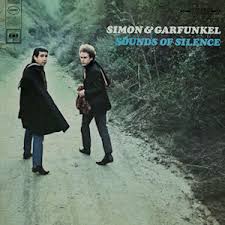 S&G’s fine debut album, consisting of mostly covers and traditional songs, included this classic, which debuted in acoustic form—two voices and a single guitar. There is little that can be said by me about this iconic song other than it gave voice not only to the helplessness and anomie confronting those faced with an impersonal society in which—even in those halcyon pre-NSA days of yore—big brother was watching us. But to those who dared to speak out and break the sound of silence, people might be waiting for something to listen to. Simon refers to this warning as “the sign.” Who among us of my—or any—age does not feel chills when he hears, “the sign said the words of the prophets are written on the subway walls, and tenement halls…” Talk about voices from the underground, this song resonates as much today as when it was first released. Ironically, neither this song, nor the album in which it was contained made much of an impact until about a year later, when an enterprising A&R man from Columbia Studios named Tom Wilson hearkened to the call of folk-rock, and added drums, bass and an electric guitar to S&G’s vocals and—voila, a smash hit. Simon was in England when he first heard the electrified version, and was astonished as anyone with its success. Simon and, of course, Dylan, were among the people “writing songs that voices never shared, no one dared, disturb the sound of silence.”
S&G’s fine debut album, consisting of mostly covers and traditional songs, included this classic, which debuted in acoustic form—two voices and a single guitar. There is little that can be said by me about this iconic song other than it gave voice not only to the helplessness and anomie confronting those faced with an impersonal society in which—even in those halcyon pre-NSA days of yore—big brother was watching us. But to those who dared to speak out and break the sound of silence, people might be waiting for something to listen to. Simon refers to this warning as “the sign.” Who among us of my—or any—age does not feel chills when he hears, “the sign said the words of the prophets are written on the subway walls, and tenement halls…” Talk about voices from the underground, this song resonates as much today as when it was first released. Ironically, neither this song, nor the album in which it was contained made much of an impact until about a year later, when an enterprising A&R man from Columbia Studios named Tom Wilson hearkened to the call of folk-rock, and added drums, bass and an electric guitar to S&G’s vocals and—voila, a smash hit. Simon was in England when he first heard the electrified version, and was astonished as anyone with its success. Simon and, of course, Dylan, were among the people “writing songs that voices never shared, no one dared, disturb the sound of silence.”
Well, thanks to Paul Simon people began listening to those very songs, and their lives were changed forever. This was one of the best. While many of you may know it only as the electrified version which became a big hit*, give a listen to the spare and haunting original.** (S&G “Wednesday Morning, 3 A.M. 10/19/64, Columbia.)
*The electrified “hit” version appeared on the eponymous “Sounds of Silence” album released on 1/17/66)
**In the “Old Friends” reunion concert album, Simon begins the song with a beautiful solo on acoustic guitar. This is a marvelous version: one for the ages.
(2) “Mrs. Robinson”
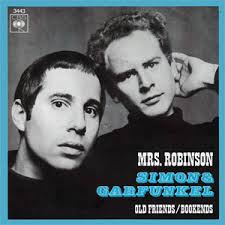 This, along with “Sound of Silence” is one of the most recognizable of songs written by Simon. It was introduced in the classic Mike Nichols film “The Graduate” (in which an earlier, shorter version of the song appears throughout), and refers to the mother of a friend of the character, Bernard, portrayed by Dustin Hoffman. Mrs. Robinson was played to great effect by Ann Bancroft, the late wife of comedian Mel Brooks. She seduces Bernard in a memorable scene. Simon & Garfunkel included an expanded version of the song on their penultimate album, “Bookends,” and it became a huge hit. It begins—and continues—with his wonderful acoustic guitar playing. The recorded version follows with a series of “dee dee dee dee’s” and then segues into the “…and here’s to you Mrs. Robinson” refrain. For the past number of years, whenever Simon pairs with Garfulkel for the song, they skip the refrain and begin it with the first stanza: “We’d like to know a little bit about you for our files.” That little suggestion of benevolent despotism is followed by the wonderfully patronizing lines, “we’d like to help you learn to help yourself,” and “stroll around the grounds until you feel at home.”
This, along with “Sound of Silence” is one of the most recognizable of songs written by Simon. It was introduced in the classic Mike Nichols film “The Graduate” (in which an earlier, shorter version of the song appears throughout), and refers to the mother of a friend of the character, Bernard, portrayed by Dustin Hoffman. Mrs. Robinson was played to great effect by Ann Bancroft, the late wife of comedian Mel Brooks. She seduces Bernard in a memorable scene. Simon & Garfunkel included an expanded version of the song on their penultimate album, “Bookends,” and it became a huge hit. It begins—and continues—with his wonderful acoustic guitar playing. The recorded version follows with a series of “dee dee dee dee’s” and then segues into the “…and here’s to you Mrs. Robinson” refrain. For the past number of years, whenever Simon pairs with Garfulkel for the song, they skip the refrain and begin it with the first stanza: “We’d like to know a little bit about you for our files.” That little suggestion of benevolent despotism is followed by the wonderfully patronizing lines, “we’d like to help you learn to help yourself,” and “stroll around the grounds until you feel at home.”
Since even non-Paul Simon fans are doubtless familiar with this song, I’ll point out just one or two lines that will stay in the minds of fans of popular music as long as songs are sung. After going to the candidate’s debate (yeah!) the lines “anyway you look at it you lose” sounds just as current following the recent presidential campaign as it did when Simon wrote it fifty years ago. I remember hearing the song during my final year in the Air Force, and was stunned by the song’s most famous question: “Where have you gone, Joe DiMaggio?” Bear in mind that the Mrs. Robinson of the song has little to do with the character in The Graduate. In the song, she is a person who has eased her sorrows by partaking of the little “secrets” she hides in the pantry with her cupcakes. To her (and the rest of us by, say, 1968) there were no more heroes. She knew that Joltin’ Joe had indeed left and gone away. We knew so as well.*
(“Bookends,” 4/3/68, Columbia)
Best version: The cut from “Bookends.” Concert versions by S&G are also good.
*I saw Simon on the Michael Kay interview show, “Center Stage,”, in 2011, and he commented on how, upon meeting DiMaggio, the Yankee Clipper didn’t understand the oft-quoted line. He is said to have replied, “I’m still here, doing the Bowery Savings Bank and Mr. Coffee commercials.” That, of course was Simon’s point; our heroes no longer even act heroic. (As mentioned above, give the Old Blue Eyes version a pass on this one.) Sinatra and DiMaggio were equally in the dark about Mrs. Robinson. She, however, understood—and missed them both. There was, by the way, no love lost between these two great icons. DiMaggio held Sinatra (partly) responsible for Marilyn Monroe’s death, banned him from the funeral, and never forgave him.
(3) “The Side of a Hill”
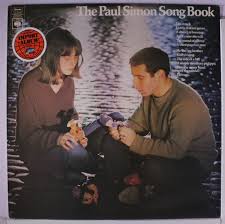 “I never heard of that song ,” I hear (many of) you say. I’m not surprised. It’s a gentle anti-war song (written by Simon) that works in beautiful counter-melody to the old folk song, “Scarborough Fair” (not written by Simon). In it, the quiet “Paper of Pins” like courtship between two young lovers contrasts with the equally quiet, but damning words of “Side of a Hill.” It’s a marvelously arranged and engineered song. That said, without “Scarborough Fair,” “The Side of a Hill” could not have made this list. When the two are combined, however, it is hard to exclude.
“I never heard of that song ,” I hear (many of) you say. I’m not surprised. It’s a gentle anti-war song (written by Simon) that works in beautiful counter-melody to the old folk song, “Scarborough Fair” (not written by Simon). In it, the quiet “Paper of Pins” like courtship between two young lovers contrasts with the equally quiet, but damning words of “Side of a Hill.” It’s a marvelously arranged and engineered song. That said, without “Scarborough Fair,” “The Side of a Hill” could not have made this list. When the two are combined, however, it is hard to exclude.
It’s important to remember that Paul Simon, like Dylan both grew out of and informed the folk revival of the 60’s. As such, Simon was aware of the song “The Cruel War is Raging,” a Civil War number popularized by Peter, Paul & Mary on their first album, and he actually uses the words “the cruel war rages” in the song. Prior to that, there was the haunting song, “Just a Little Rain,” written by Malvina Reynolds and featured on Joan Baez’s 3rd album. As with this song, rain and cloud imagery abound.* It is likely that these three songs were very much on the young Paul Simon’s mind when he composed this number. Each of these songs (to paraphrase Joan Baez in her introduction to “Just a Little Rain”), don’t protest gently, “but sound gently.”
It is difficult to discern all the words of “Side of a Hill” when sung in tandem with “Parsley, Sage,” but the words, “and to fight for a cause they’ve long ago forgotten” stay with me to this day.
You can hear the stand-alone version of “Side of a Hill” on an old British 45, or on YouTube. As for the best version, listen to the masterful blend of the two songs on “Parsley, Sage Rosemary and Thyme,” 1/24/72 (Columbia)
* Lastly, the child who died in the war in “The Side of a Hill,” is just seven, the same age as the little girl who died in Hiroshima in the classic folk song “I come and Stand at Every Door,” written by the Turkish poet Nazim Hikmet (to the tune of “The Great Silkie of Shule Skerrie).”
(4) “Homeward Bound”
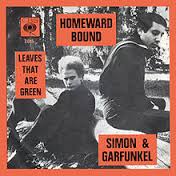 This classic, from the “Parsley Sage “ album has been played so often that it is easy to forget how good a song it was—and is. “Road” songs by touring musicians have been a staple of rock and country singers from David Bromberg (“New Lee Highway,” and Creedence Clearwater (“Lodi”) to John Denver (“Leavin’ on a Jet Plane”) and Willie Nelson (“On the Road Again”)—to name but a few of many. Homeward Bound is one of the best. The yearning for home is something palpable to almost every person whose work takes him from where he (or she) would prefer to be. The tour in this song is set before they could afford their own bus, and they sit in the railway station, “with suitcase and guitar in hand, and every stop is neatly planned for a poet and a one-man band.” The isolation, dreariness, and monotony of the act of touring reminds the listener that the life of the working entertainer (whatever the adulation and compensation) is still work. The irony, of course, is that—for most touring musicians—there’s nothing they’d rather do. That’s why they do go on the road. That said, the endless days of lukewarm coffee and cardboard rolls are no substitute for one’s own bed and a home-cooked meal—not to mention someone dear with whom to share it.
This classic, from the “Parsley Sage “ album has been played so often that it is easy to forget how good a song it was—and is. “Road” songs by touring musicians have been a staple of rock and country singers from David Bromberg (“New Lee Highway,” and Creedence Clearwater (“Lodi”) to John Denver (“Leavin’ on a Jet Plane”) and Willie Nelson (“On the Road Again”)—to name but a few of many. Homeward Bound is one of the best. The yearning for home is something palpable to almost every person whose work takes him from where he (or she) would prefer to be. The tour in this song is set before they could afford their own bus, and they sit in the railway station, “with suitcase and guitar in hand, and every stop is neatly planned for a poet and a one-man band.” The isolation, dreariness, and monotony of the act of touring reminds the listener that the life of the working entertainer (whatever the adulation and compensation) is still work. The irony, of course, is that—for most touring musicians—there’s nothing they’d rather do. That’s why they do go on the road. That said, the endless days of lukewarm coffee and cardboard rolls are no substitute for one’s own bed and a home-cooked meal—not to mention someone dear with whom to share it.
“Parsley, Sage…”
(5) “Bridge Over Troubled Water”
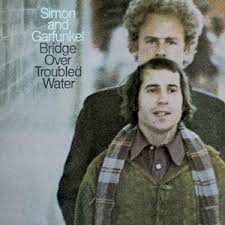 This song will probably be remembered as Simon’s masterpiece, and justly so. Although he has written several “anthemic” songs (see “America,” “The Boxer,” and “American Tune,” below) there is something about this much covered song (e.g. Aretha and Elvis among the multitudes) that makes it stand out among the rest. There are, of course, many songs about friendship and support, but there is something about “Bridge” that continues to give me chills—especially when Art Garfunkel (still) hits those high notes at the end. For anyone who has ever felt inconsequential, lines like “when you’re weary, feeling small…” and “when you’re down and out, when you’re on the street…” describe the loneliness and self-doubt that can only be cured by someone coming to your aid as promised in this song. There’s a fascinating thing about this song musically. While it’s easy to think of the final stanza (“Sail on silver girl”) as a release or “bridge” to another stanza, it is almost note for note the same melody as the first two stanzas. And yet, there is something different about it that gives the song its special quality. Written abut his then wife’s discovery of her first gray hair, the language of the closing stanza makes me think of a great silver train “sailing” across the bridge above those troubled waters. The line, “your time has come to shine, all your dreams are on their way” moves me as only great lines of song or poetry can. While Paul Simon has, understandably, expressed frustration that a work like this is remembered as an Art Garfunkel song,* he shouldn’t be. It remains a gift to us all, regardless of the deliverer. (After all, “Old Man River” remains a credit to Jerome Kern and Oscar Hammerstein even though people associate it with the singers Paul Robeson and William Warfield, who made it famous. So let it be with “Bridge.”)
This song will probably be remembered as Simon’s masterpiece, and justly so. Although he has written several “anthemic” songs (see “America,” “The Boxer,” and “American Tune,” below) there is something about this much covered song (e.g. Aretha and Elvis among the multitudes) that makes it stand out among the rest. There are, of course, many songs about friendship and support, but there is something about “Bridge” that continues to give me chills—especially when Art Garfunkel (still) hits those high notes at the end. For anyone who has ever felt inconsequential, lines like “when you’re weary, feeling small…” and “when you’re down and out, when you’re on the street…” describe the loneliness and self-doubt that can only be cured by someone coming to your aid as promised in this song. There’s a fascinating thing about this song musically. While it’s easy to think of the final stanza (“Sail on silver girl”) as a release or “bridge” to another stanza, it is almost note for note the same melody as the first two stanzas. And yet, there is something different about it that gives the song its special quality. Written abut his then wife’s discovery of her first gray hair, the language of the closing stanza makes me think of a great silver train “sailing” across the bridge above those troubled waters. The line, “your time has come to shine, all your dreams are on their way” moves me as only great lines of song or poetry can. While Paul Simon has, understandably, expressed frustration that a work like this is remembered as an Art Garfunkel song,* he shouldn’t be. It remains a gift to us all, regardless of the deliverer. (After all, “Old Man River” remains a credit to Jerome Kern and Oscar Hammerstein even though people associate it with the singers Paul Robeson and William Warfield, who made it famous. So let it be with “Bridge.”)
(“Bridge Over Troubled Waters,” S&G, 1/26/70, Columbia)
Best Version: Art Garfunkel on the original “Bridge” album and on virtually every live performance of him doing it. As close a second as there could be : Aretha Franklin (She even adds, via her back up singers, a new line—and personal emphasis—that works for her as it would for few others: “Still water runs deep, yes it do.” Indeed. Honorable mention: Paul Simon’s live versions in concert.
*Playboy interview with Tony Schwartz, 1968.
Stereo Times Masthead
Publisher/Founder
Clement Perry
Editor
Dave Thomas
Senior Editors
Frank Alles, Mike Girardi, Russell Lichter, Terry London, Moreno Mitchell, Paul Szabady, Bill Wells, Mike Wright, and Stephen Yan,
Current Contributors
David Abramson, Tim Barrall, Dave Allison, Ron Cook, Lewis Dardick, John Hoffman, Dan Secula, Don Shaulis, Greg Simmons, Eric Teh, Greg Voth, Richard Willie, Ed Van Winkle, Rob Dockery, Richard Doron, and Daveed Turek
Site Management Clement Perry
Ad Designer: Martin Perry





Be the first to comment on: PAUL SIMONS TOP 25